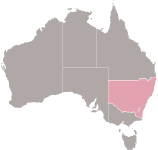NSW heavy vehicle rest stops provision


Driver fatigue is one of the top three contributors to fatal crashes on the NSW road network, contributing to at least 21% of fatal heavy vehicle crashes across the regional road network between January 2015 and December 2019.
The freight industry has identified that there is insufficient or inadequate infrastructure to allow drivers to rest when required. An audit of heavy vehicle rest stops across 15 key regional freight routes in 2018 identified that there are inadequacies in the provision of heavy vehicle rest stops across NSW. Inadequacies include the distance between sites, availability of parking spaces for heavy vehicles, and a lack of extra-large parking bays designed for High Productivity Vehicles (HPVs).
Although this proposal is focussed on the regional state road network in NSW, the number and quality of rest stopping opportunities in every other state and territory is a potential problem. The 2019 Australian Infrastructure Audit highlighted various challenges associated with the regional road network. Similar assessments of rest stops infrastructure to identify needs in other locations along major and regional freight routes is encouraged.
Strategic Fit
Increasing the number and quality of rest stops for heavy vehicles on key freight routes across NSW aligns with state and Commonwealth policies including the National Remote and Regional Transport Strategy, Heavy Vehicle Productivity Plan 2020-25, the National Road Safety Strategy 2021-30 and NSW Freight and Ports Plan 2018-2023
Societal Impact
Expanding coverage with new and upgraded rest stops for heavy vehicles, particularly HPVs, would provide access to stopping areas for longer vehicles and reduce driver fatigue, thereby improving productivity and reducing the likelihood of injuries and fatalities and associated costs caused by fatigue-related crashes.
Deliverability
An expanded network of sites would greatly increase ongoing maintenance obligations although the use of service centres and other similar sites may reduce these ongoing costs. There are various mechanisms that could be explored for development and delivery, including alliances, commercial and/or Council partnerships, including for development, design and construction.
Proponent to identify and analyse potential investment options (Stage 2 of Infrastructure Australia’s Assessment Framework).
The proponent is currently planning a business case to seek funding for the first five-year tranche of a 20-year program. The proponent’s business case should consider:
- The costs and benefits of tranches within the context of the program
- Provision of facilities that accommodate different gender requirements
- Alignment of benefit calculations with outcomes, for example, providing a clear link between how rest stop utilisation reduces driver fatigue and has a positive impact on road safety
- Infrastructure and non-infrastructure solutions to determine the best performing option.
Refer to Infrastructure Glossary for terms and definitions.